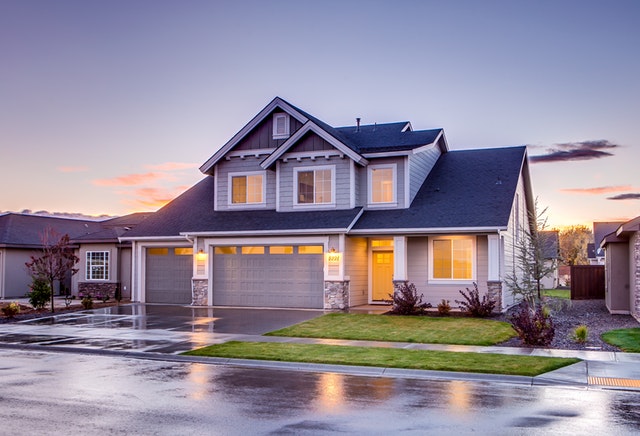What exactly are modular houses?
Modular houses are buildings built in a factory. Finished sections of a house (so-called modules) are transported to their new location, where they will be assembled by the builders. Prefabricated houses, box houses, finished houses are other popular terms for modular homes.
Mobile houses are specific modular houses, usually small sizes, which can be transported from one place to another. Mobile homes usually do not require foundations.
Houses made of sea containers are a special type of modular homes, which are usually not intended for residential construction. They are used as temporary commercial buildings, holiday cottages, etc. There has also been a trend in the world for the use of sea containers as all-year residential objects.

What is the difference between modular homes and traditional houses?
Modular houses are built in the production hall using gantry cranes, ready-made molds and other equipment. The factory prefabrication means that they can be ready within 2 months, and not as in the case of traditional homes for around 8 to 12 months. Modular houses must meet the standards of traditional houses, and standards for prefabricated elements, thanks to which their construction is more durable
If you are considering buying a modular home, it is important that you look around for builders offers and technologies available on the market. You can consider construction in wooden construction technology, steel structure, or something more similar to traditional bricked-up technology, eg concrete, lightweight concrete modules. Houses made of LECA (light expanded clay aggregate) are also available, but in this case only walls that are assembled on the construction site are prefabricated.
All of us wants to build a house is an expense for a lifetime, it is important that you make the right choice of both technology and contractor.
Facts about modular houses
- Modular homes can be adapted to the needs and requirements of the investor, they have no construction restrictions.
- Modular homes can be extended, rebuilt or reduced depending on the investor’s needs.
- The construction of modular homes is several times faster than traditional houses.
- Mortgages for modular homes are granted on the same basis as for traditional houses.
- Modular houses are usually made in wooden frame technology, less often in steel or concrete construction.
- Modular homes have higher durability than houses built traditionally in the same technology, due to the need to adapt modules for transport.
- Concrete structures of modular homes will additionally be characterized by high heat storage capacity and non-flammability.
- Most modular homes are designed with the support of the latest computer techniques.
- Manufacturers of modular homes can build much more than a modern barn, but remember that the design of the house should be relatively simple.
You can request from the manufacturer of modular houses virtually any type of building — from simple houses with flat roofs, gable roofs to extended villas. But in the case of more complex structures, the cost and time of construction will be significantly extended. Try to ensure that the design of your home does not have complicated roof elements or unusual wall shapes.
Opinions about modular homes
In Poland, modular technology is most often associated with the technology of building apartment blocks utilising large prefab concrete slabs used in the 70–80 of the previous century. This is one of the main reasons why modular homes are rejected by investors without going deeper into the changes that have occurred over the years in home prefabrication technologies. If you want to quickly build a house, I recommend that you to get familiar with the available modular technologies and opinions of modular house owners in order to properly assess them. Modular houses currently produced can reach the same quality and durability as traditional homes.
